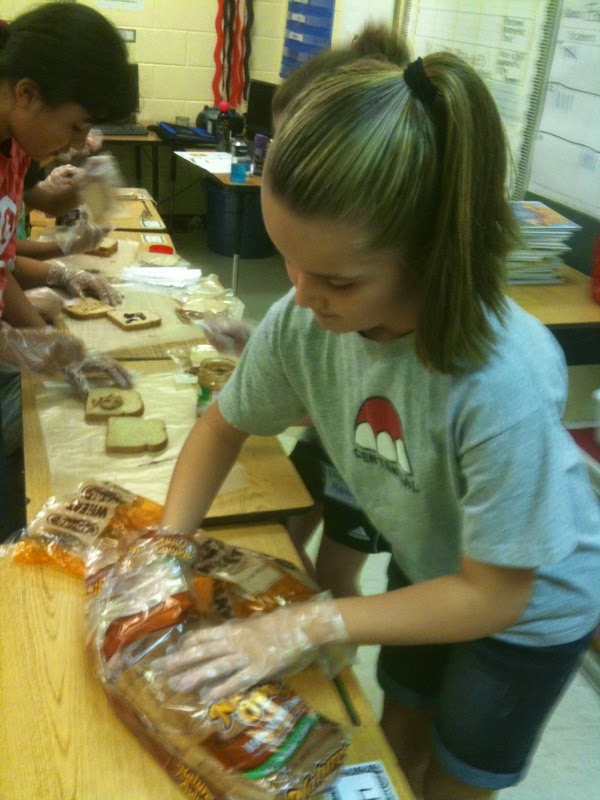So I’ve seen this post floating around the
Internet, and honestly, I’ve refused to click on it in the past to even read
what it had to say. The article is titled, “Why I Want to Give Up Teaching.”
After seeing six or seven teaching colleagues post the same article, I finally
gave in and read it. This blog post is my opinion, and it’s the opposite… ”Why
I Hope I Never Want to Give Up Teaching.”
To Mrs. Natale, the teacher who wrote the
article, I completely understand your frustrations. This is only my eighth year
teaching, but I have been through similar situations. We started off in Georgia
with the QCC standards, then moved to the GPS, and now we’re part of the CCGPS
– Common Core Georgia Performance Standards. I’ve seen a shift in the field
from using tests to see how kids are doing to now using tests to measure my own
effectiveness. No, I’m not a fan.
I’m with you. I don’t think it’s fair that my
performance as an educator will be tied to whether or not one of my precious
students passes a fifth grade reading test when she is reading on a first grade
level. (We’ve been working on phonics during our lunch times together; b-a-t,
stretch out each sound, tap it out, put them together… good job, that’s “bat!”
Now let’s try another…) I don’t think it’s fair to assess how effective I am in
my classroom when I have students who break down into tears because they miss
their dad who’s passed away, or a loved one has gone to jail, or their mother
is too busy working three jobs to help them with their homework. I refuse to
say, “Buck up, buttercup, you’ve got to work harder on this long division.”
Sometimes, I put the math away and bring out the hugs and a piece of bubble gum
instead. (Hopefully an administrator won’t pop in for a walk-through during one
of those moments, or I’ll have documentation that I’m ineffective.)
HOWEVER, these are the exact reasons I refuse
to quit teaching. My students need an educator who sees all these crazy shifts
in education but still stands as a rock for her students. When times in
education are changing – and when times in my students’ lives are changing –
they need someone strong to whom they can cling. They need a rock in the storm.
They need a shelter to help them weather all the winds of change that blow
their way. And I honestly, truly, completely believe that God has created me to
be that safe place.
No matter how tough educational mandates may
be, they are likely harder on my students. I cannot allow testing requirements,
TEM (teacher effectiveness measure) scores, or changes in standards to sway me
from my goal. And my goal is to teach children. I don’t teach standards. I
don’t teach to tests. I don’t even teach novels or math concepts. No, this lady
right here teaches CHILDREN.
I know the pressure – it stares me in the
face every day. I have to prepare my children for the fifth grade end-of-year
test. I also have to prepare my students for middle school. Those pressures do
weigh heavily on me. BUT I cannot change course. I cannot let it affect me. I
cannot let the pressures of teaching make me less effective. And I don’t mean
“effective” by my administration’s standards (though I do hope they think I do
a good job). I mean effective by my students’ standards.
I saw a former student at the store today,
and as soon as we made eye contact, a huge grin came upon his face. I taught
him 6 years ago, but he immediately began to tell me how fifth grade was one of
the best years of his life. His mom recognized me as well, and we were
instantly transported back to the days when her son was just a scrawny
ten-year-old boy in my class. Now he’s a tall, beefy ball player. I was honored
that he remembered me, humbled by his mama’s sweet words to me, and blessed by
our conversation in the checkout line. HE, the countless children I’ve taught
in the past, and my students today are my fuel; when my energy tank seems low,
they keep me going.
Yes, education is a crazy field. But to all
my brothers and sisters in this career field, it’s probably not going to get
better. My friends who have taught for twenty years or more tell me that
education is like a pendulum. It swings back and forth. What was all new twenty
years ago will swing back into popularity. What was all the rage in education
10 years ago has gone out… but just wait, we’ll see it again with a fancy new
acronym. We can’t let change keep us from doing the jobs that our children NEED
us to do.
Mrs. Natale, you seem like a passionate lady.
Please don’t quit teaching. Your children need you. I think I’m a pretty good
teacher, and I also think my children need me. America’s children need strong
men and women to weather the craziness we call “teaching” and show up ready to
defy all odds on a daily basis. Because we all know that the odds won’t always
be in our favor, but if we can sustain our passion, we CAN defy those odds. I
may be a little biased, but I think teachers are heroes. To all of my teacher
friends who have felt this way in the past, please don’t quit. You never know
which child sitting in your classroom is desperate for a hero. So suit up,
friends. Your cape is calling.


























.JPG)
.JPG)
.JPG)

















